Conference by Ryan Cloete – Geofish for trace metals
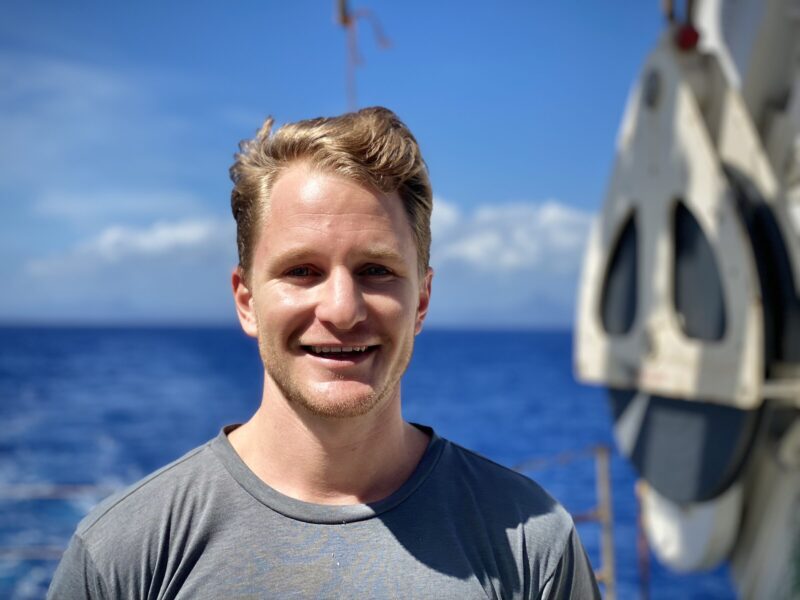
May 6th, 2022, R/V Marion Dufresne, off the coasts of Madagascar
Authors: Luis Chomienne, Manon Gibaud, Christophe Mocquet
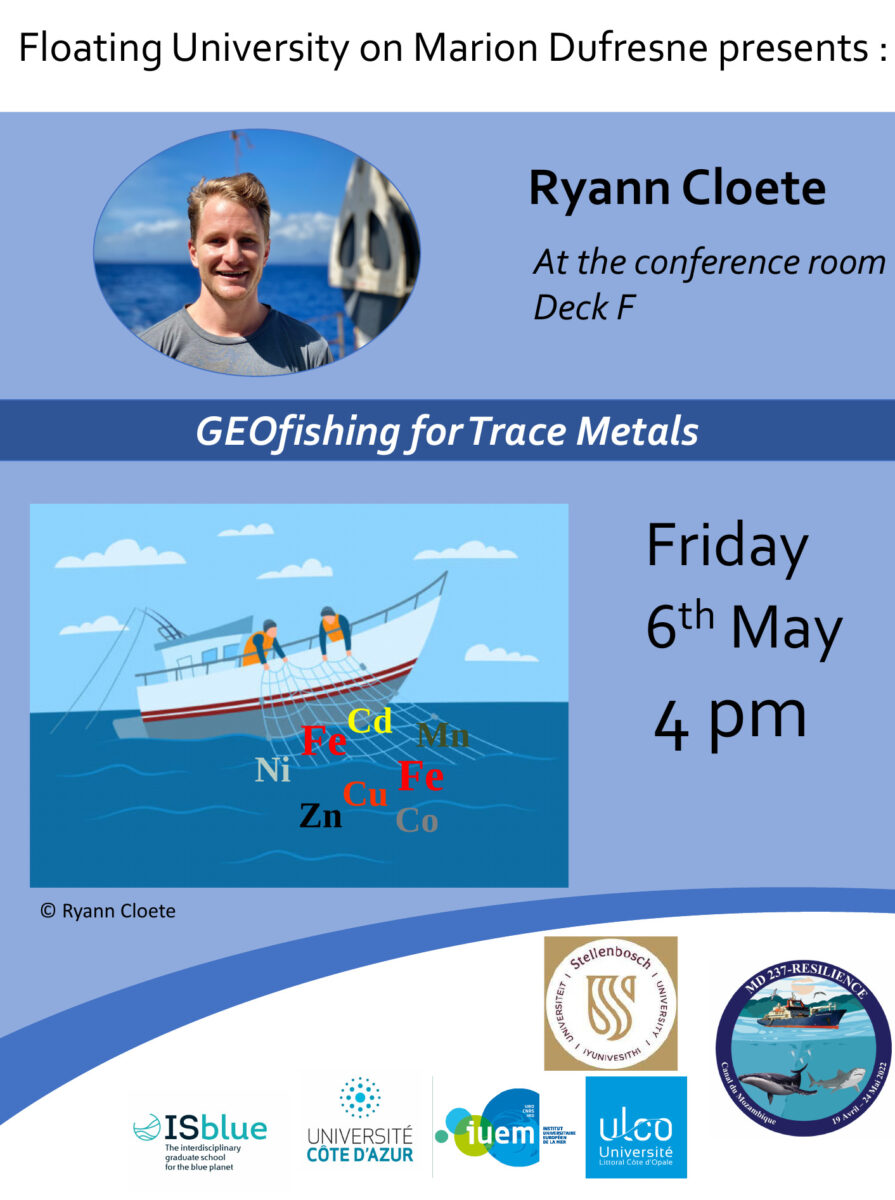
Ryan Cloete is a post-doctoral fellow at the University of Stellenbosch in South Africa and is currently working in collaboration with the University of Western Brittany on trace metals. Trace metals concern all metallic elements with very low concentrations in the environment, ranging from pico (10-12) to nano (10-9). In the marine environment, metals are essential micro-nutrients for primary production, but can also be toxic depending on the concentration and the element. Their interactions with the environment make them an interesting proxy, thus Aluminum allows to trace dust, Lead to follow the anthropic impact and Cadmium to study the paleo-production (phytoplanktonic production in the past).
On the method side, vertical profiles are made with the rosette-CTD (with “clean” metal-free bottles) and horizontal transects are made by surface sampling with the GEOFISH. The water is then filtered in a very controlled environment, in a “bubble” isolated from all forms of metals. Quantitative analysis is performed by inductively coupled plasma mass spectrometry (ICP-MS).
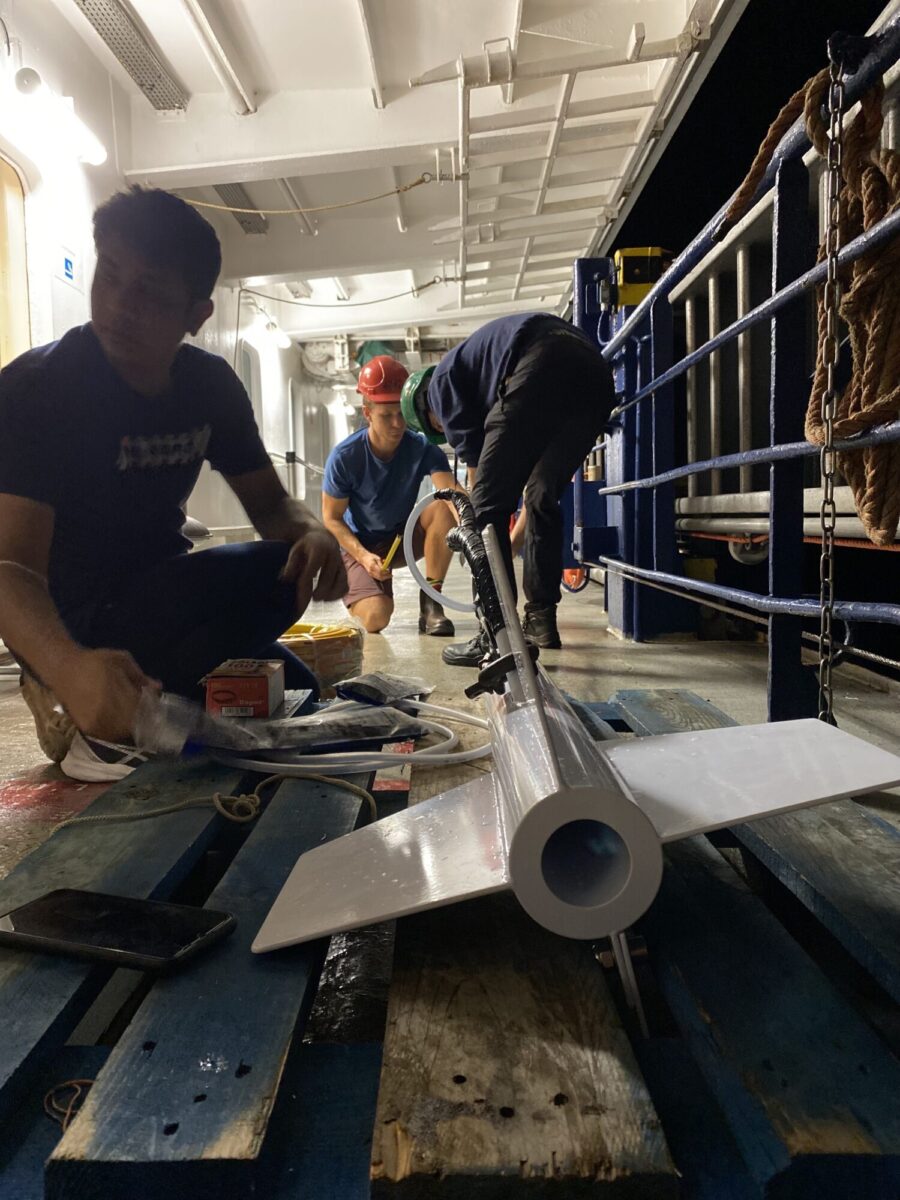
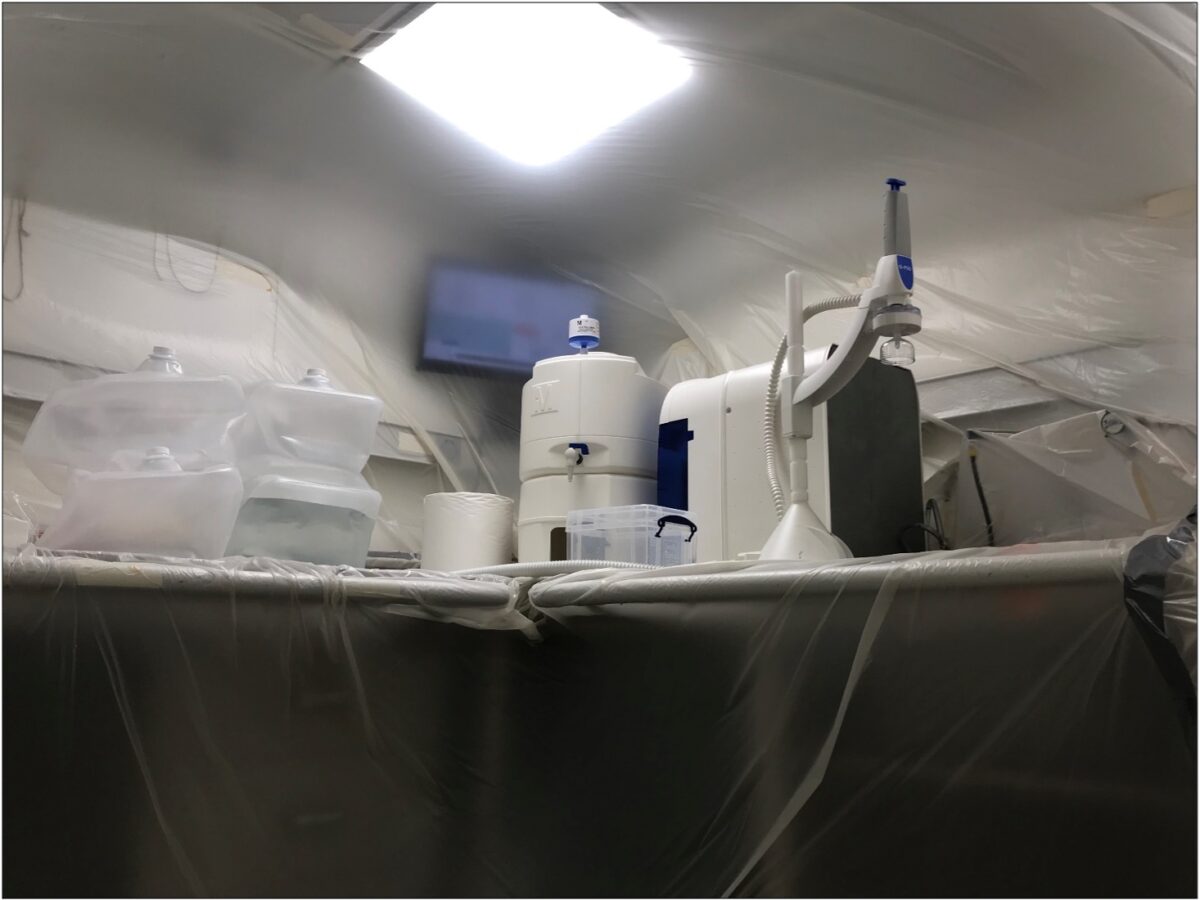
Large mixing of water occur around Antarctica, and since the Southern Ocean is directly connected to all of the world’s oceans, water masses migrate to each of them. To study trace metals in this area, one must be free of the influence of phytoplankton production, and this means collecting water in winter under particularly harsh conditions. Data are therefore scarce, but Ryan was still able to use 3 different data sets.
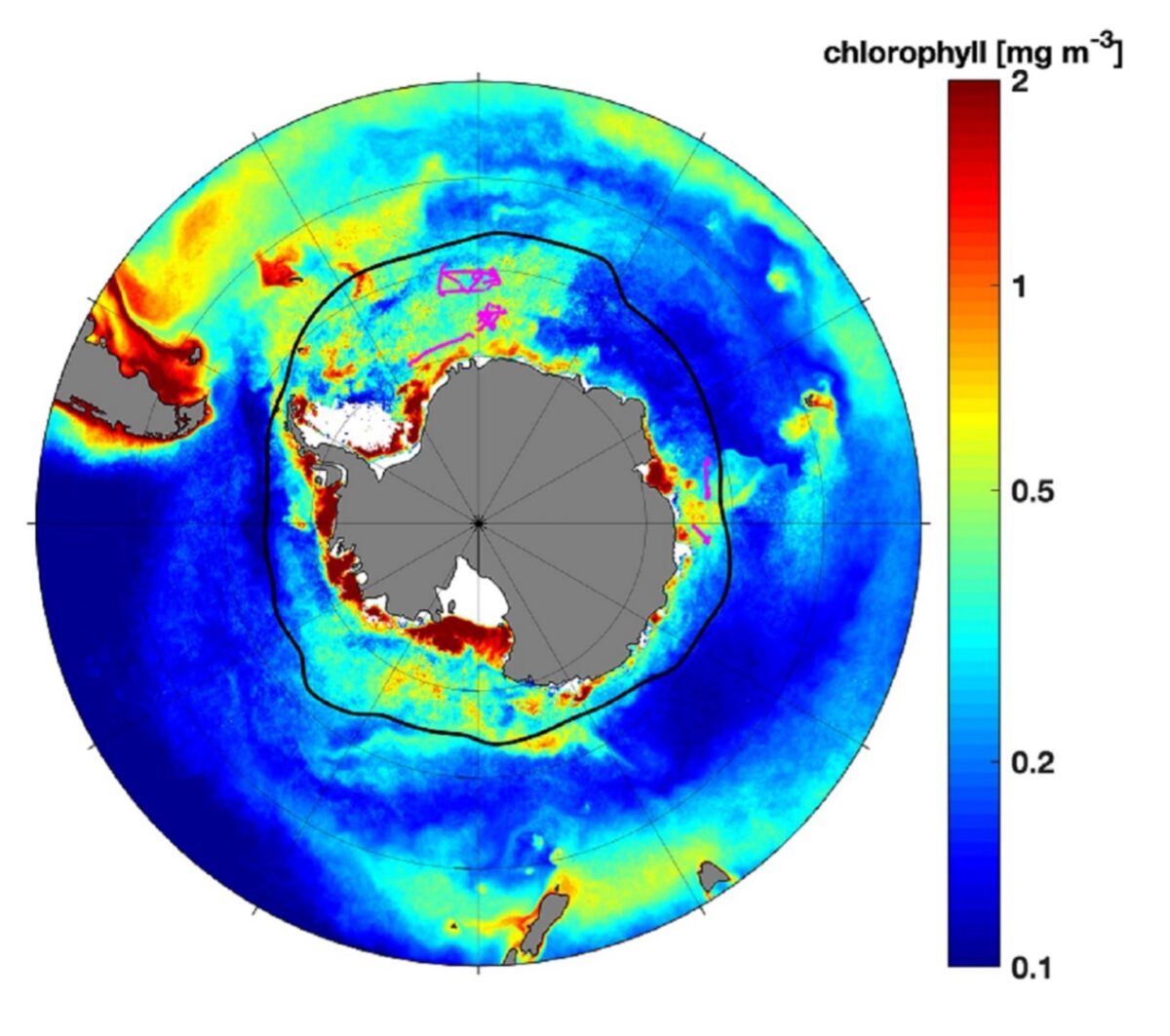
During his PhD, Ryan Cloete focused on the so-called HNLC (High Nutrients, Low Chlorophyll) regions of the Southern Ocean. In these areas, primary production is less important despite a high amount of nutrients (nitrates, phosphates), even in upwelling areas. This is due to a lack of trace metals that are essential for the physiology of phytoplankton, especially iron. About 30% of the ocean surface is limited in iron, but manganese and zinc are other limiting elements. Ryan focused on the distribution of the latter for his thesis.
Ryan’s results show that the distribution of zinc is different from other metals like iron. The maximum concentration of the dissolved form is at the depths, while particulate zinc (incorporated into organic matter) is present at the surface. The reason for this heterogeneity is that phytoplankton absorb zinc. Thus in winter, when the lack of light and turbulence in the water greatly reduces primary production, the concentration of zinc is homogeneous throughout the water column. In spring, the increase in daily light dose causes a phytoplankton bloom (very high phytoplankton growth). This bloom will cause a depletion of trace metals at the surface, and the waters that will be directed further north will therefore be low in zinc. The planktonic community will be affected. Diatoms are present in zinc-rich and cold waters. Conversely, dinoflagellates thrive in warm, zinc-poor waters.
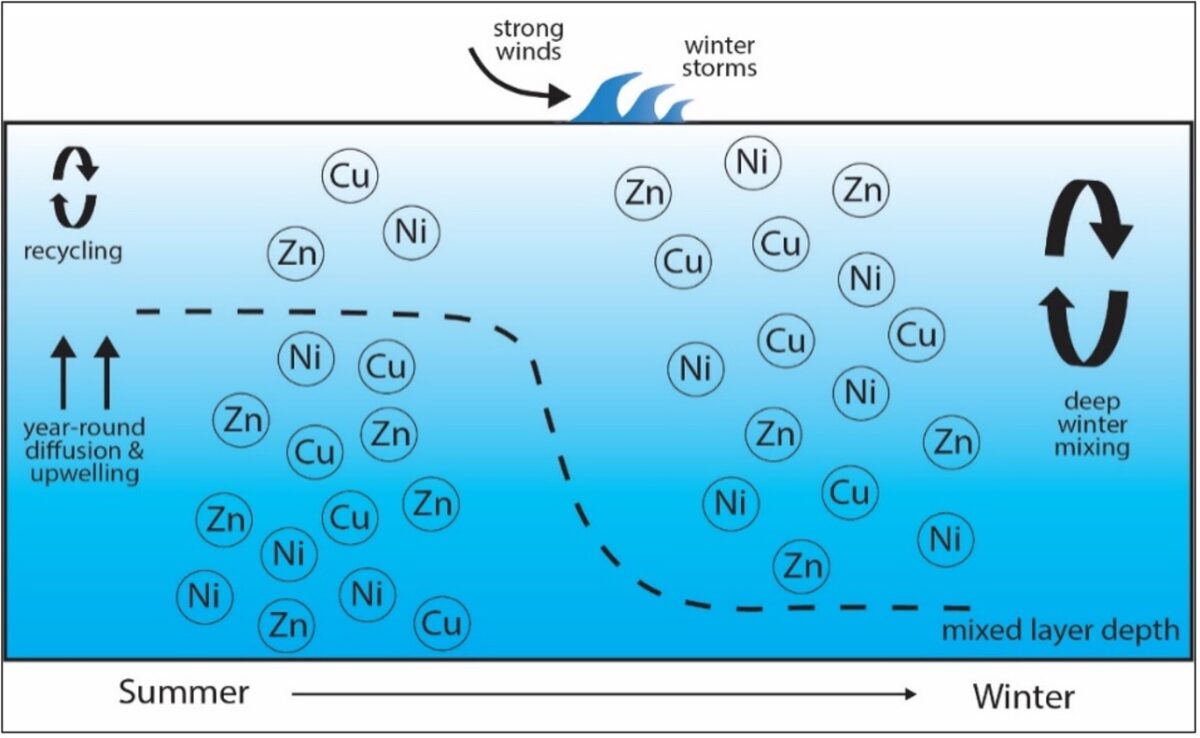
More generally, the studies of Ryan’s team during the RESILIENCE campaign contribute to the global understanding of the distribution of trace metals by feeding the datasets of the GEOTRACES program. Our campaign thus provides data on the distribution of trace metals at high spatial resolution in eddies (through the use of GEOFISH).
 Attention, vous utilisez un navigateur peu sûr !
Attention, vous utilisez un navigateur peu sûr !